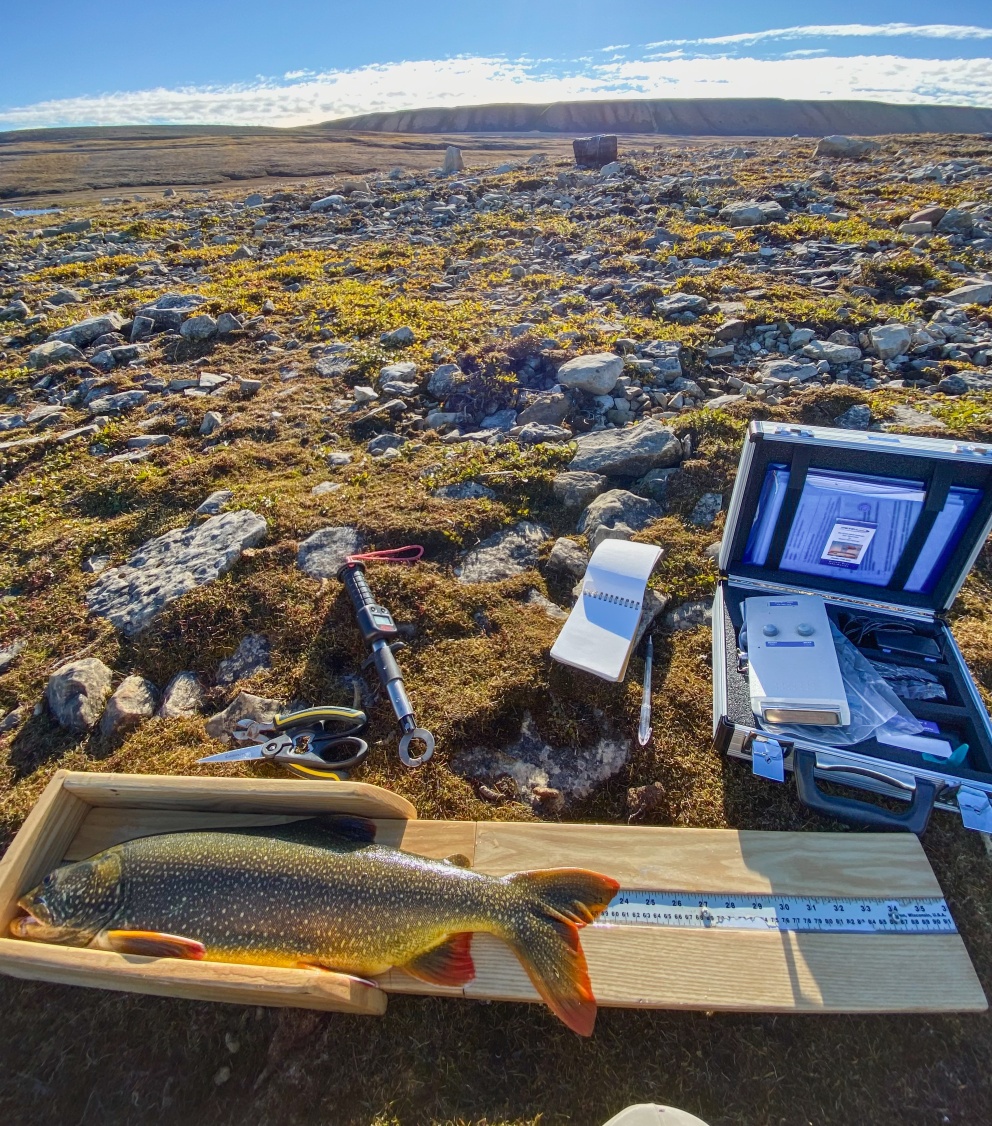Out of office!
Third Place

Working in the remote Canadian Arctic means that experiments and sample collection look a little different than in the laboratory! This image was taken at a freshwater lake that is a 45 minute ATV ride from the nearest town of Ikaluktutiak, Nunavut. Here, I was measuring the length, mass and body fat percentage of a lake trout prior to removing various tissue and otolith (ear bone) samples from the fish. Lake trout are a northern salmonid that live in freshwater lakes year-round. Their close relative, the migratory Arctic char, also spends winters in the cold, ice-covered, nutrient-poor lakes of the Arctic, yet presents different behaviours. For example, while Arctic char completely cease feeding and swimming during the winter, the lake trout remains active and will attempt to feed during the winter. Our goal was to use the samples we collected from both lake trout (pictured) and Arctic char from the same locations to better understand the differences in how these fish store and use their energy reserves (e.g., carbohydrates, fat and protein), and if this contributes to their differential overwintering behaviours. This information can be useful to better understand the ecological implications of competition between these species.